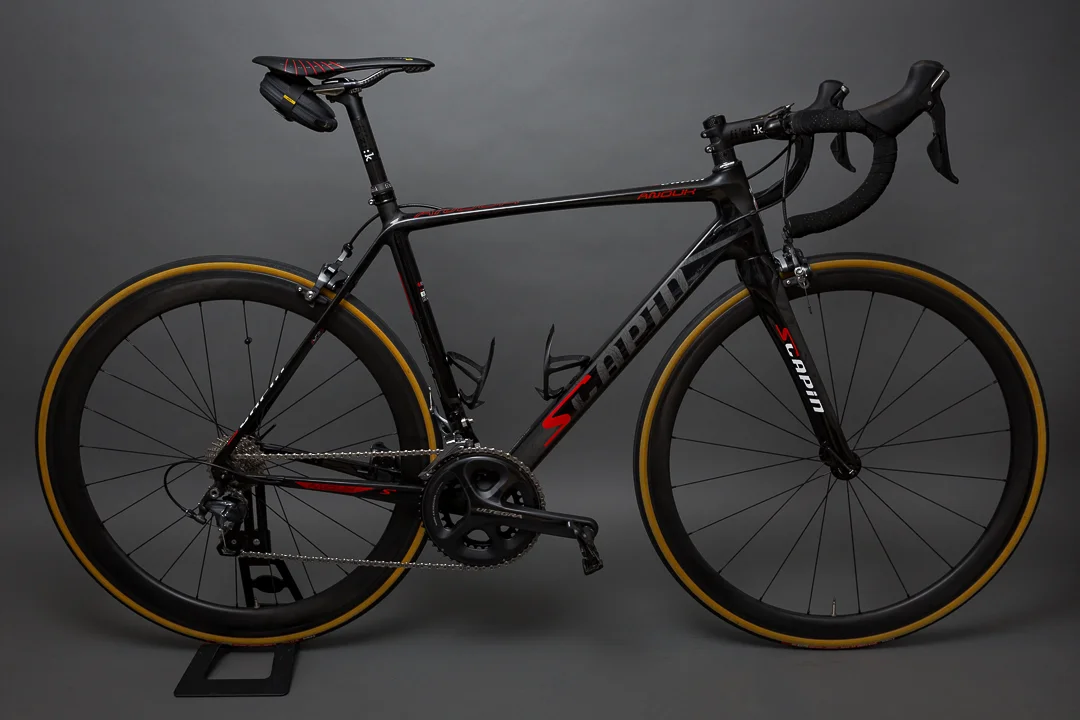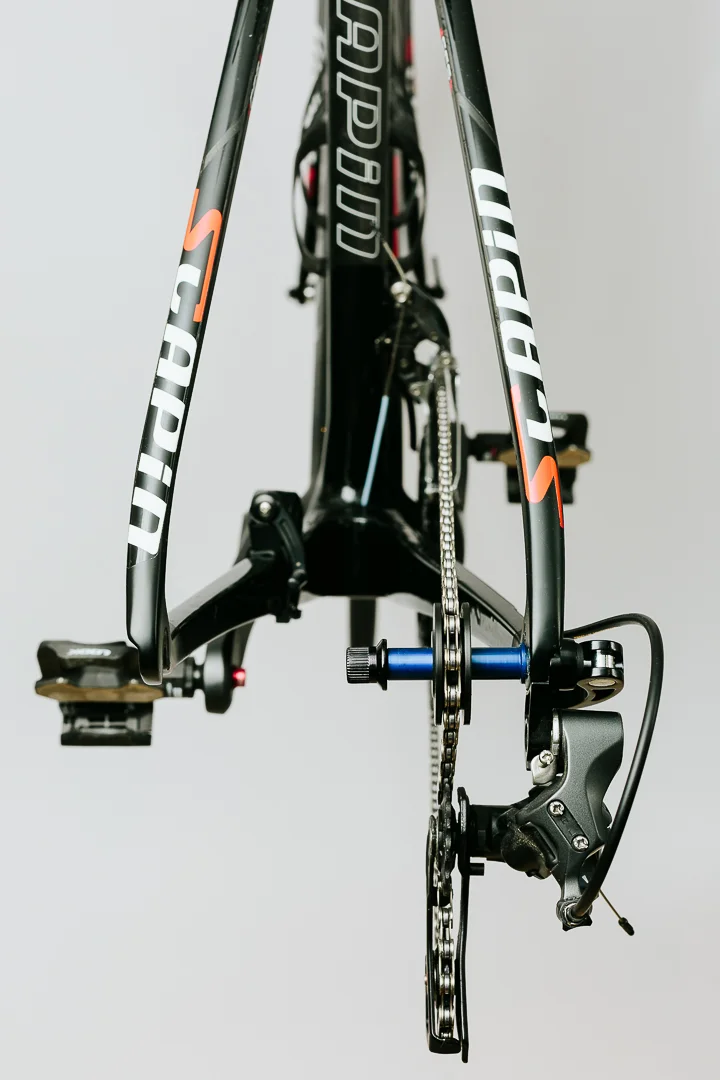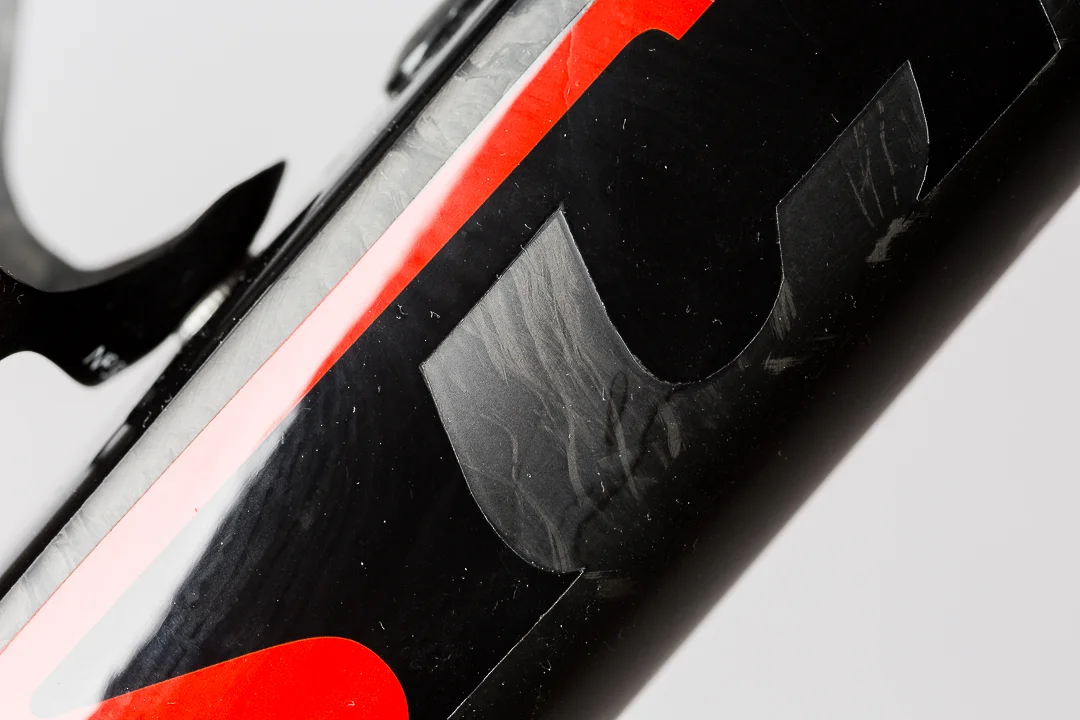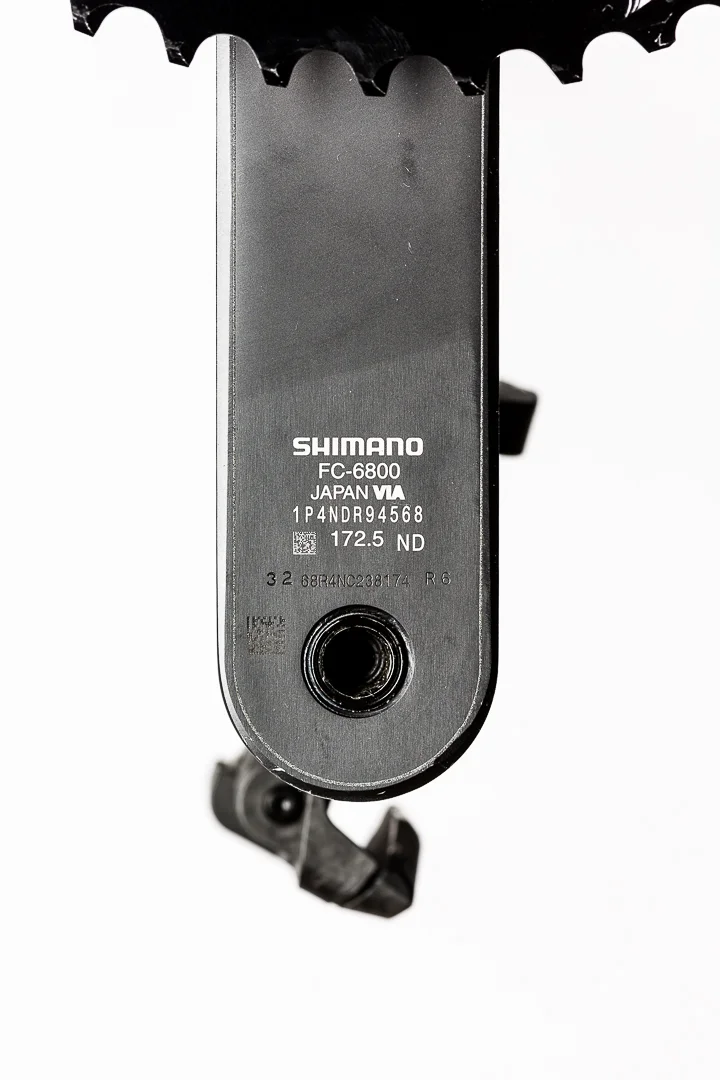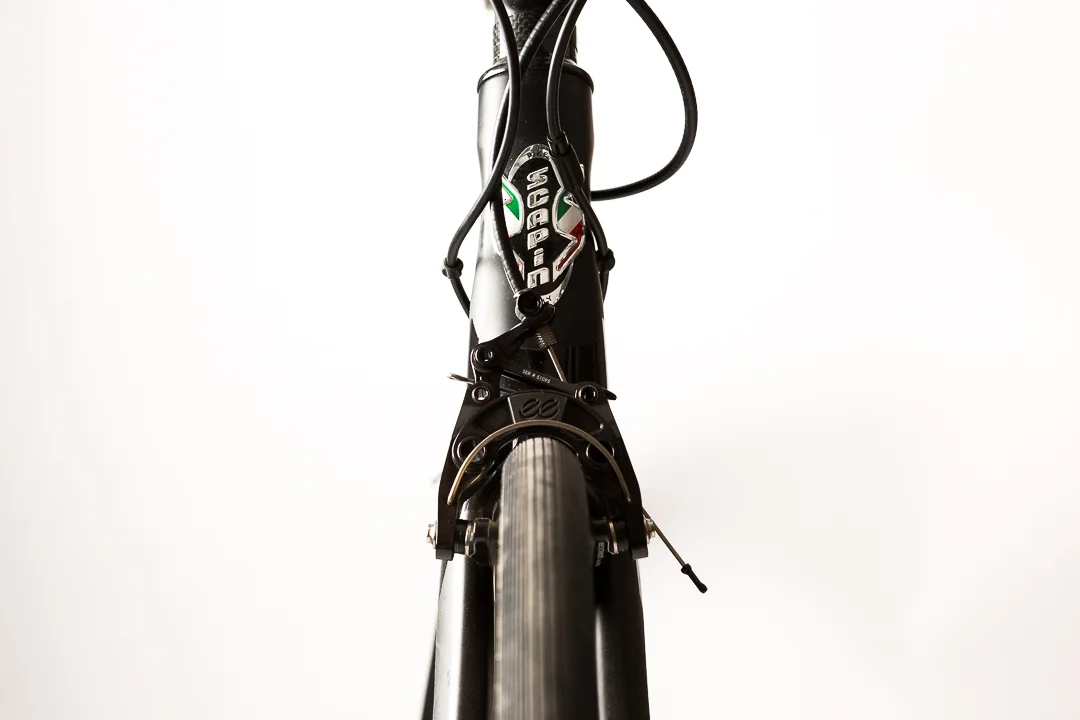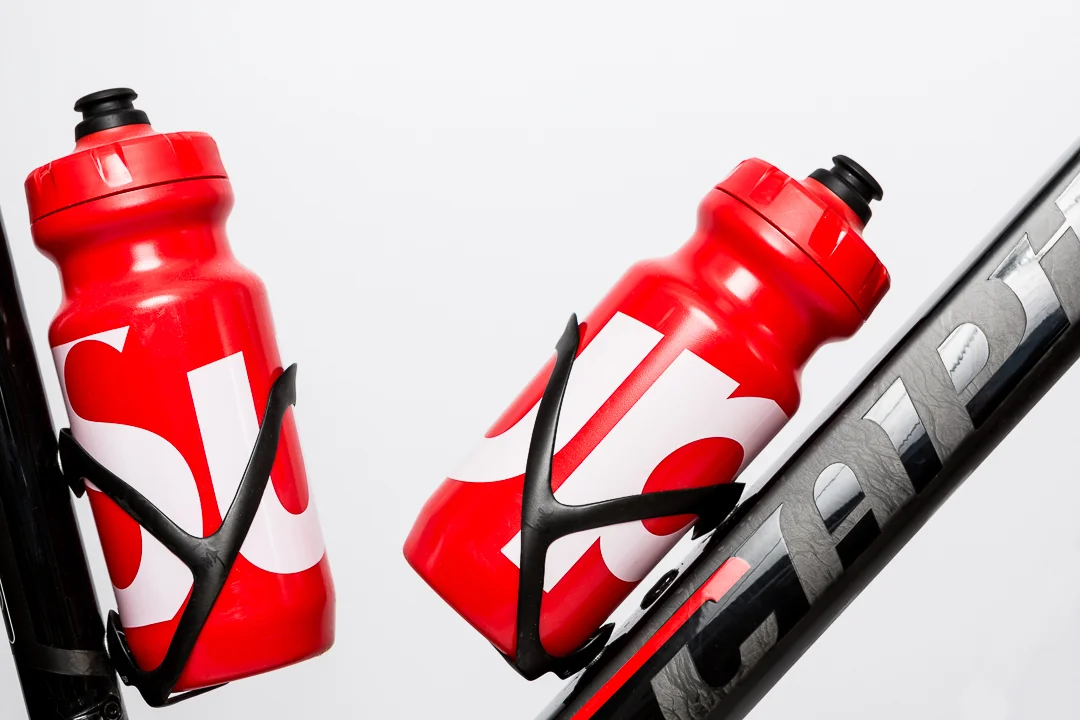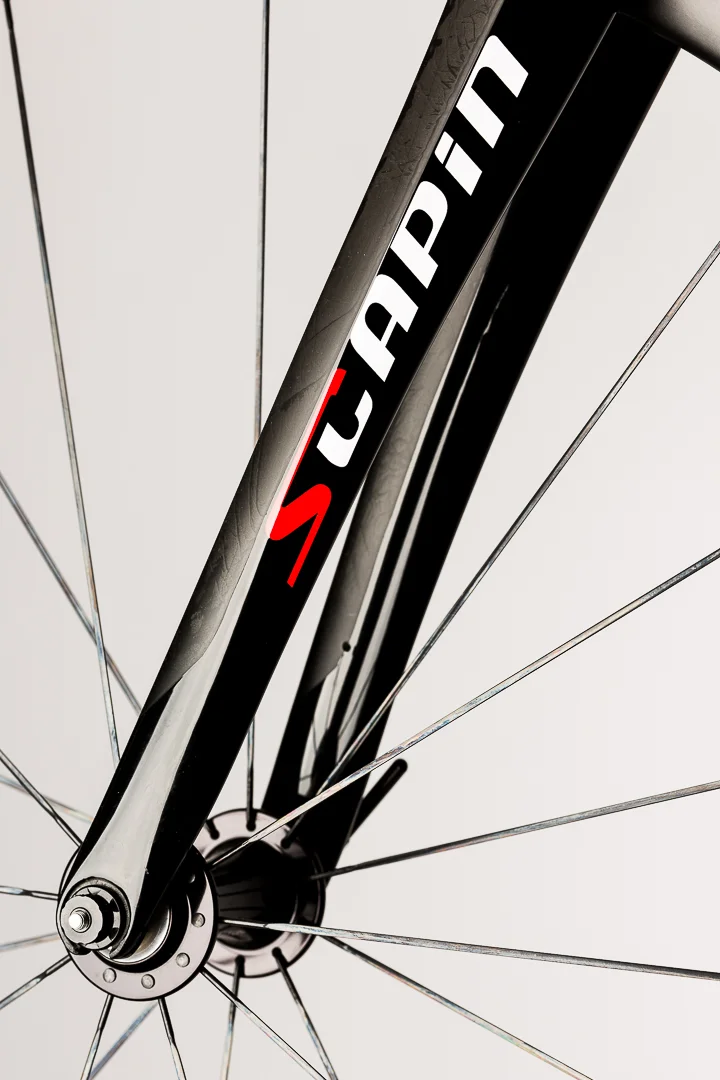Review: Scapin Anouk

background
Scapin was founded in 1957 by Umberto Scapin, but it was his sons who brought attention to the brand outside of Italy. Nearly 50 years after it’s inception, Scapin was purchased by Cicli Olympia. A significant change and impact of this acquisition was that Scapin production stayed within Italy but moved in-house to the more modern Olympia facilities. In philosophy Scapin builds comfortable, practical, and perfect bikes down to the last detail. Locally Scapin is sold through Blacksmith Cycle and distributed in North America by Stage Race Distribution.
The Scapin Anouk is a more modest carbon frame amongst an impressive line up. Especially when sitting alongside the top end drool worthy Ivor and race oriented Etika. My Scapin Anouk came to me through a long engagement with the folks at Blacksmith Cycle. Originally we had discussed and I had planned for a higher end custom built frame. But life happens. After my budget changed dramatically I asked to look at some new options. What I was trying to find was something that would include the best ride characteristics of the Pinarello and the Storck I had been riding at the time. What I asked for was something as comfortable as the Pinarello but also as nimble and entertaining as the Storck. The Pinarello is like racing around on your couch and the Storck felt like trying to ride an angry donkey. Important to me was a lower overall weight to help create a bike that nimbly climbs with grace. Honestly climbing isn’t my strength and I can use every bit of help.
Blacksmith presented a few options for me to consider and there were all fantastic. A big issue I couldn’t get past was color choices. It seems I have a thing for stealthy black bikes (who doesn’t?) Previously I had seen the Scapin Anouk AN532 (as seen at Sea Otter) in the shop and was curious about it. But it wasn’t until the moment I saw the newest paint scheme that it all changed. Here's how. During a drop by to the shop they casually mentioned there was a new unreleased version packed in a bike bag about to leave for Interbike. As soon as I started to unzip that bike bag my fate was sealed. Inside was the new AN500 black on black color scheme. Before I left the shop that day, my order was confirmed. However, since the AN500 new color scheme wasn’t actually available yet it would be months before mine would arrive. I was happy to wait as it gave me time to plan out the rest of the build and I'd get one of the first on the road. All said and done the confirmed order was placed in August and my Anouk came home with me just in time for Christmas.
After having just over a year on the bike, the following is my review of the Scapin Anouk. Click on any images to view them in lightbox and follow the link to the full gallery at the end of the review.
initial impressions
Honestly it was a bit of love at first sight. Visually the frame set is beautiful. It looks equally fast, light, and inviting. The geometry of the Scapin Anouk was nearly bang on the custom geometry planned so it would easily get me into the position of my verified fit. For me the ideal Anouk size is the small frame set with its 54.5cm effective top tube. For reference this frame size has a 535mm stack and a 386mm reach giving this a bit of relaxed geometry for greater comfort but still far from a fondo geometry.
On the road, the Scapin Anouk is comfortable and feels like it rides stable and low. The relationship between geometry and carbon construction gives the Scapin Anouk a stiff front end that delivers agile handling and quick acceleration. In motion the Anouk does well to stay at pace without being greedy on your watts, but it does top out (more on that below). The overall low weight helps ensure the Scapin Anouk is a nimble climber capable of turning power into vertical meters gained. The stack, reach, and tube angles combined with thin seat stays deliver a very comfortable riding position that lasts all day.
In January of 2015 bikerumor.com wrote a first look coverage of the Scapin Anouk and since mine was the first complete customer build on the road, the article featured a few images of my Anouk.
design & construction
While Scapins have traditionally all been built and finished in house, the Anouk carbon frame and fork are built overseas and return to Italy for painting. Presumably this helps to keep the cost down and meet market pricing.
There are two main construction methods used to build carbon bikes and Scapin uses monocoque construction with unidirectional (UD) carbon fibre to build the Anouk frame set. While tube to tube may be easier and offer greater freedom for custom geometry as it connects tubes via lugs, monocoque which uses pre-shaped molds to create larger sections of the frame allowing for more creativity in tube shape profiles and lower weights. In addition the fewer the number of bonded joints the less potential for failure.
The Scapin Anouk is a full carbon frame and fork comprised of a carbon layup that uses both Toray T700 and T800 fibres. You've probably heard or read these names in bike frame specs before, but what do they mean and should you care? Well Toray is a brand name referring to Toray Industries who is the worlds largest producer of carbon fibers. So knowing Toray fibers were used should instill confidence that your bike is made of quality composite materials. Beyond that product naming can be confusing with all the marketing speak wrapped all over it. Let's break it down. To my knowledge in Toray's naming convention the "T" in the product name refers to 'tensile' which is the unit of measurement in force. Think of this as the force required to pull a rope apart by pulling on it from both ends or stretch. Tensile strength is usually measured in thousand pounds per square inch, meaning Scapin uses a combination of two varying (700 and 800) tensile strength fibers in their composites. That's only half the story, what about stiffness or the resistance to flex? That's where modulus comes into consideration. The T700 itself is intermediate or standard modulus and the T800 is a high modulus. The higher the modulus the greater the stiffness of the fibre. But it's important to note that these two key properties work in relation to each other. Stiffness comes at the cost of tensile strength. What this means is that for any additional stiffness in the fiber you will see a negative impact in it's ability to resist tensile forces. This all makes the construction and design of a carbon frame a beautiful and artful science. Builders will choose a combination of materials that offer tensile and modulus strength properties and then and put them together in what's called the 'layup sequence' to balance and blend the benefits of each. That layup is what provides a strong, light, and tuned ride.
Reading resources: All of the carbon construction above is only possible because over the past decade carbon composites have seen near endless advancements in both of its materials, carbon and resin. These advancements have helped move carbon from the mysterious material of super bikes to the reality of nearly all cyclists.
Matt Appleman of Appleman Bikes has this great write up on why UD matters
Custom builders Calfee have this write up on simplified overview on carbon fiber types including what intermediate and high modulus technically means
If you want to go a bit deeper Ibis Cycles has this great article on the technical basics of carbon fibres
At the heart of the Scapin Anouk the engineers have put a large beefy BB86 bottom bracket which helps to turn your pedal power into those forward driving watts. The 86 in the name stands for the 86mm width of the bottom bracket shell in the frame that the bearing cups are pressed into. Unlike PF30 or BB30, the BB86 bottom bracket standard offers the same construction benefits of a larger, stiffer bottom bracket with far less chances of creaking because they are not held in place by a small metal tab. Another benefit of the BB86 bottom bracket standard is that the bearing spacing is identical to an external threaded bottom bracket but allowing for lower weight without affecting crank width. The BB86 bottom bracket supports 24mm spindled cranks from both Shimano and SRAM.
Reading resources: Park Tools has this great article on current BB standards
Remember that the Scapin Anouk is built with a monocoque construction? Well you can definitely see that on the outside. Tube design on the Scapin is a combination of a varying and sculpted shapes made possible by the mold forms used in monocoque construction. Most notable of the tube profiles on the Scapin Anouk may be the big boxy squared off down tube that sits in contrast to the flattened almost rib bone shaped top tube. My favourite tube profile on the bike is actually the flat pencil thin seat stays. They are beautiful. The front fork is trim but still beefy. It appears sleek without feeling undersized. The fork sits securely into the frame with a 1.5” tapered and hourglass shaped head tube. This large tapered head tube along with the 72* head tube angle delivers front end stiffness and entertaining handling. Drive train derailleurs are secured through a front braze-on mount and double plate dropouts at the rear. Speaking of dropouts, the Anouk has full carbon dropouts front and back.
Notable about the design of the Anouk is the move to the narrower 27.2mm seat post size. This is a trend that seems to be catching on. This smaller diameter seat post offers more flex and dampens some rough roads. Pair this narrower seat post diameter with those strikingly flat and narrow seat stays and you’ve got a bit of suspension protection built in. Those thin seat stays extend almost all the way up to the seat post junction before bridging. The neat space between this arch and the rear brake bridge makes for what I call the peekaboo window.
Cables on the Scapin Anouk are all routed internally for clean aesthetics. This means that rather than running bare and outside the frame between cable stops, the cables run inside and through the frame. To aid in set up, the frame set comes supplied with internal plastic sheaths that you can run the cables through from entry to exit port. In case you are wondering, they are held in place by a plastic grommet at the top end. True that these internal sheaths may make setup and cable replacement easier, they can be prone to adding friction to the cable system. Why? Think of this sheath as the same liner inside your external cable housing. So if external housing can wear out and add friction then the internal one can too. Luckily this sheath is easily removable and cables can easily be run naked through the frame. To bypass that BB86 bottom bracket, the cables run inside the frame and underneath the bottom bracket. They are managed via an external access port. Thankfully the Anouk is future proofed by the capability to run both mechanical and electric group sets.
The Scapin Anouk is available in 5 sizes, Small through XL and in 2 paint schemes. It’s available as a frame set or in a range of preset or custom build options
fit & function
How it's made is really good information but none of that matters if it doesn't fit and you don't like how the bike rides. So in this section of the review I'll dive into those aspects.
Frame sizing is always somewhat relative. What matters is your ideal fit dimensions and whether the stock sizing can get you in a small window around that fit. Since top tubes all have different slope angles it's best to use effective top tube lengths to make relative comparisons between any two bikes. Here is an explanation of effective top tube. Any comparison done this way is very very speculative to the overall fit. In order to better compare apples to apples it’s wiser to look at stack and reach. The 535mm stack and 386mm reach of the Anouk's geometry is squarely somewhere between race and fondo geometries, maybe leaning a bit more to relaxed. To be ideal for me, I would prefer a taller heat tube in order to minimize the need for spacers. As well a smaller gap between the XS and S which would bring the cockpit closer, allowing me to run a longer stem.
In ride quality some may argue that the smaller diameter seat post flexes too much; honestly, I’ve never felt it moving. If anything I’ve enjoyed its ride feel over the back breaking stiffness of larger seat posts. Some may say that the stiff front end and compliant back end are forever contrasting; from my perspective, I think it's a great blend that delivers the best of both worlds.
critiques
The only way to get a perfect bike is to custom built it. There is a whole industry built around that principle. While this is wonderful news, it's far outside the reach or reality of most of the market. So what do the mortals do? We buy stock frames. All stock build frames are going to involve a set of compromises and concessions that you simply have to accept. With that, here are three things that weigh on my mind when I think of my Scapin Anouk.
First, the ride of the Scapin Anouk is wonderful, yet in terms of pure speed it’s no demon. It accelerates well, it holds pace well, but it tops out to soon. The trade off for having a compliant back end to the bike is that while it’s lighter and nimble going up hill it simply loses steam in a sprint. Many times I’ve found that while I’m still pushing down harder and harder on the pedals the bike just won’t go any faster. Why is that? Let’s be honest it’s not a bike made for racing. This isn’t the bike you’d be buying if you’re racing for trophies or bragging rights at the town sign. So don't hold it against the Anouk, enjoy the way it does everything else so wonderfully.
Second, internal cable routing offers clean lines and aesthetics that compliment the beauty of any well designed bike. Internal cables are also a mechanics worst nightmare, especially the home mechanic. The supplied internal sheaths make things easier for initial build but external routing is always faster, easier, and less stress inducing to maintain. Personally I don’t mind and even prefer internal routing but if you’re not comfortable with it, you may want to grab a Park Tools IR-1 internal routing kit because one day you’re going to realize you need it.
The third and final consideration is weight. Overall my final build does come in sub 15 lbs although I haven’t gone to the extreme on build components. At the heart of my build is the frame set which Scapin’s catalogue quotes a weight of 1090 grams. Strangely it's also quoted 950 grams on the distributor site. Both weights are for unspecified sizes. Based on my own build I'm guessing the truth is closer to 950 grams or the small frame. This is far from the lightest and most exotic offers on the market but more importantly far far from the heaviest too. I’d put it in the lower side of middle ground meaning it offers great weight savings but has room for improvement in todays market.
bottom line
The Scapin name and brand reputation carry a lot of weight. They rank amongst exotic and the Anouk is a very welcomed modest offer in the affordable carbon bike market. Built overseas and finished in Italy, the Anouk carries the attention to detail and heritage expected of this Italian brand. The Scapin Anouk is as much fun to ride as it is to look at, maybe the best part being the price tag. It is a lot of value for the money. I was told it rides in a price bracket far above where it should. Trust me it does. They told me "You're getting $4000 worth of bike in a $2000 pricetag" and they weren't lying.
I still plan to build that custom dream bike soon but it’s going to be hard to unseat the Anouk from my favor and will probably be built with some of the Anouk’s character in mind.
For the full gallery of Scapin Anouk images click here.
build list
Final weight: 14.9lb/6.8kg
Frame: Scapin Anouk (small)
Headset: FSA
Headset spacers: Tune carbon spacer
Compression Plug: Tune GumGum
Top cap: GodandFamous Team Top Cap
Seatpost clamp: Tune Schraubwürger
Seatpost: Fizik Cyrano R1
Saddle: Fizik Antares 00
Stem: Fizik Cyrano R1
Bartape: Fizik 2mm Superlight Soft Touch
bottle cages and hardware: Tune Wasserträger 2 - my review
Shift Cables (inner & outer): Yokozuna Reaction
Brake Cables (inner & outer): Yokozuna Reaction
Brakepads: Swiss Stop prince
Brakes: EE Brakes (Ultegra BR-6800 pictured)
Shifters: Ultegra ST-6800
Front derailleur: Ultegra FD-6800 braze on
Rear derailleur: Ultegra RD-6800 short cage
Crankset: Ultegra FC-6800 semi-compact & AbsoluteBlack oval road - my review
Cassette: Ultegra CS-6800 11-25
Chain: Ultegra CN-6800
Bottom Bracket: Chris King PF24
Chain catcher: K-Edge
Wheel Rims: Yishun 38/50mm wide profile - my review
hubs: Chris King R45
Skewers: Tune DC 14
Spokes: Sapim CX-Ray
Tires: Vittoria Open Corsa SC
Innertubes: Continental Race 28 light
Pedals: Look Keo blade
Computer mounts: Barfly Fizik - my review
